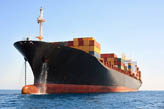Understanding the International Maritime Dangerous Goods Rules
The International Maritime Dangerous Goods (IMDG) rules are essential guidelines for shipping hazardous materials by sea. These regulations aim to ensure safety, prevent pollution, and minimize risks associated with the transportation of dangerous substances. The IMDG rules are applicable to all parties involved in the shipping process, including shippers, carriers, and handlers.
The primary purpose of these rules is to classify dangerous goods into categories based on their nature, handling, and exposure to fire or water. This classification helps determine the appropriate packaging, labeling, and documentation required for each shipment. Key principles include safe packing practices, proper labeling and marking, and adherence to safety standards.
In addition to classification, the IMDG rules emphasize the importance of issuing and maintaining ship manifests, cargo manifests, and other necessary documentation. These records must reflect accurate information about the goods, their quantity, and any special handling instructions. Proper training for crew members and handlers is also a critical component of compliance.
Compliance with the IMDG rules not only protects the environment but also safeguards the safety of crew, cargo, and the public. Adhering to these regulations ensures that all parties involved in the transportation process are aware of their responsibilities and can take appropriate measures to prevent accidents.
In conclusion, understanding and complying with the IMDG rules is vital for anyone involved in the maritime transportation of dangerous goods. By following these guidelines, stakeholders can minimize risks, ensure compliance, and promote a safer and more sustainable shipping industry.
